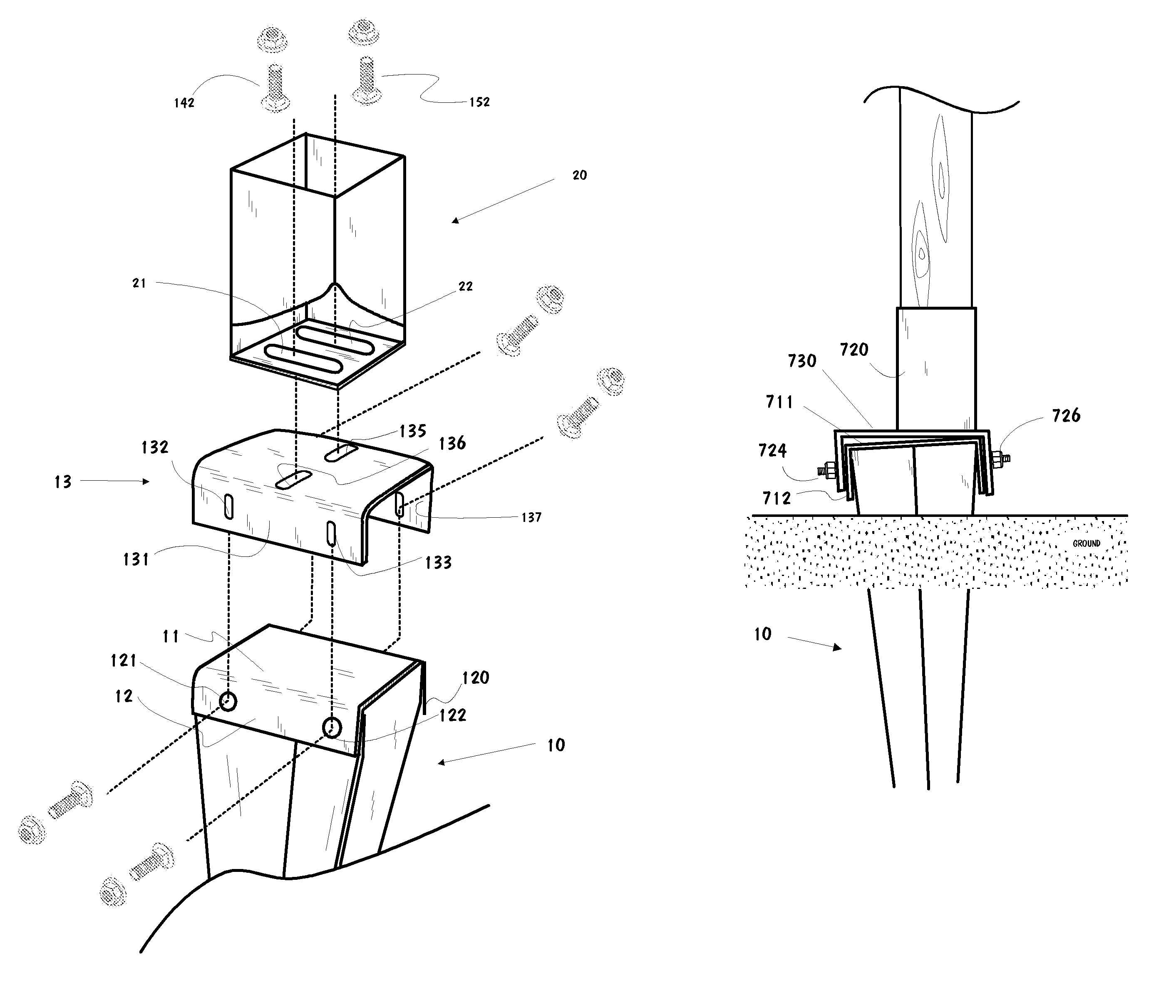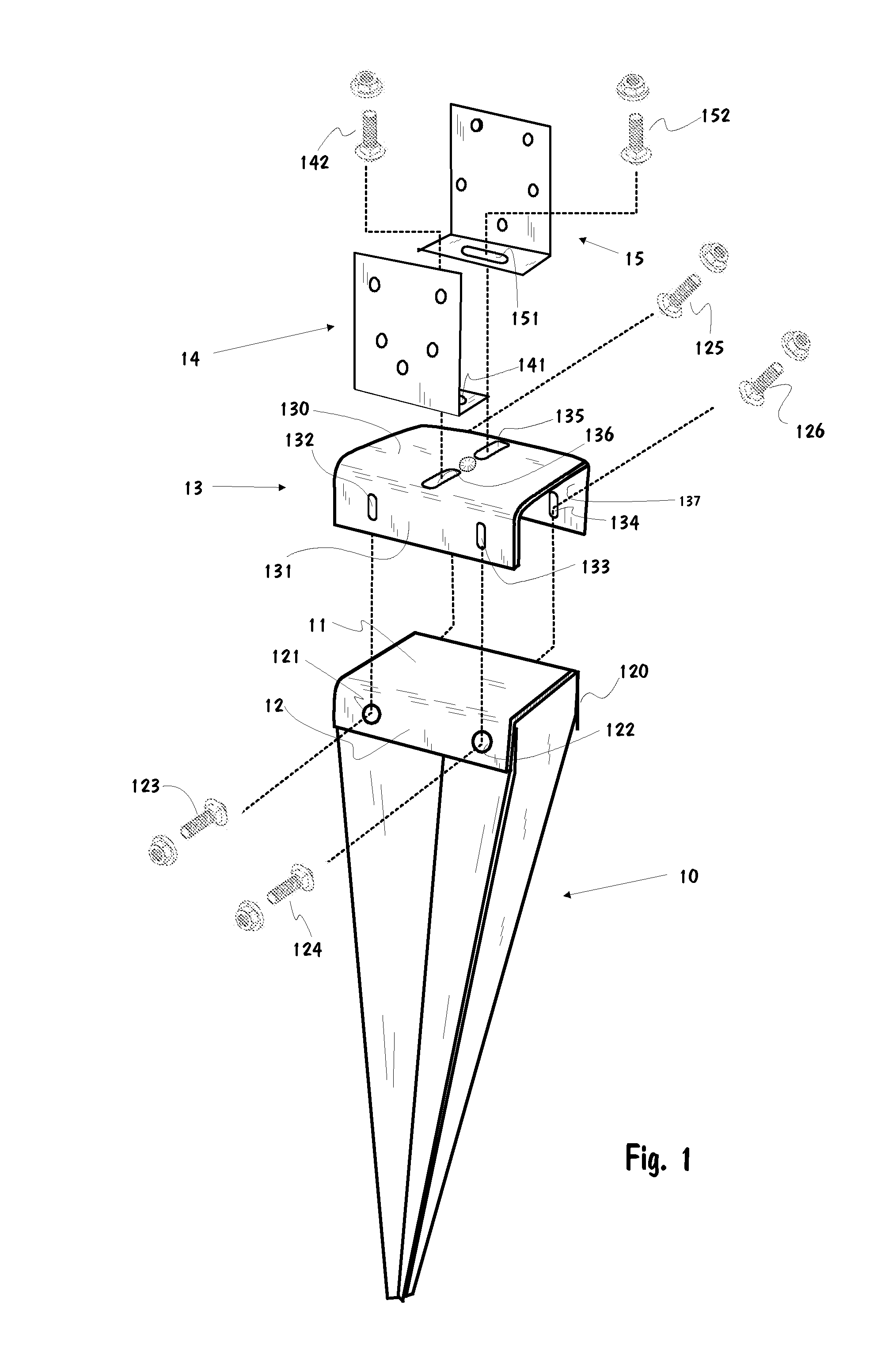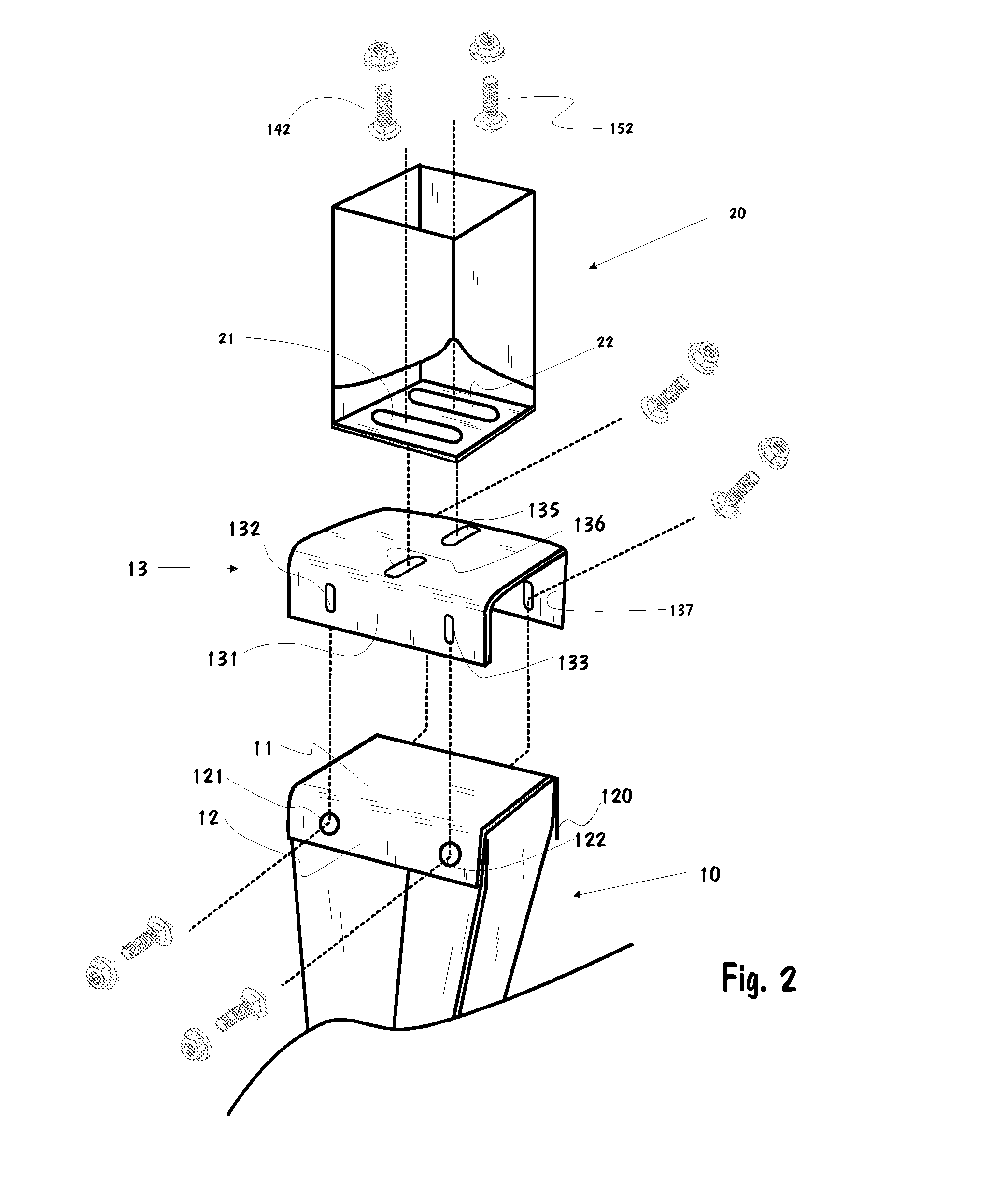Ground anchor with tilt compensation
a technology of tilt compensation and ground anchors, applied in the field of ground anchors, can solve the problems of lack of adjustability, the inability to precisely align consecutive posts, and the tilt of posts mounted into sockets, and achieve the effect of easy straightening
- Summary
- Abstract
- Description
- Claims
- Application Information
AI Technical Summary
Benefits of technology
Problems solved by technology
Method used
Image
Examples
Embodiment Construction
[0033]FIGS. 1 and 2 depict exploded views of a ground anchor with tilt compensation according to the invention: all parts are made of steel.
[0034]The ground anchor in FIG. 1 comprise traditional anchor part 10, consisting of the commonly used wedge-shaped steel plates welded together. The anchor part is wedge-shaped, making it easier to ram into the ground, but it can also feature a screw, in which case it is screwed into the ground.
[0035]On the top of anchor part 10 is welded a top plate 11 for receiving ramming strokes and transferring the force to the anchor part while protecting the flanges against bending. While the use of a top plate is known, the invention encompass an end plate which has downwards-bent edges forming flanges on opposite sides, only one downwards-bent flange 12 is shown in FIG. 1, each flange having at least one hole. Flange 12 depicted here has two holes: 121 and 122.
[0036]A post or pillar, not depicted in the figure, is mounted on the mounting part. In FIG. ...
PUM
 Login to View More
Login to View More Abstract
Description
Claims
Application Information
 Login to View More
Login to View More - R&D
- Intellectual Property
- Life Sciences
- Materials
- Tech Scout
- Unparalleled Data Quality
- Higher Quality Content
- 60% Fewer Hallucinations
Browse by: Latest US Patents, China's latest patents, Technical Efficacy Thesaurus, Application Domain, Technology Topic, Popular Technical Reports.
© 2025 PatSnap. All rights reserved.Legal|Privacy policy|Modern Slavery Act Transparency Statement|Sitemap|About US| Contact US: help@patsnap.com



